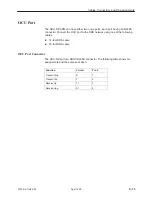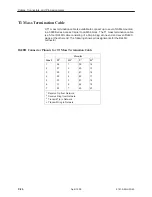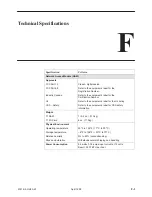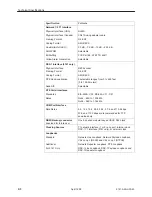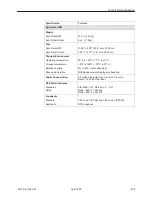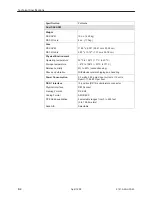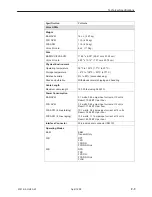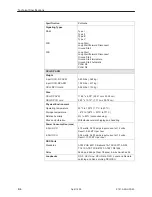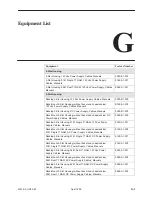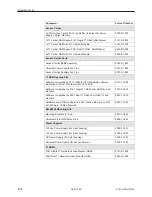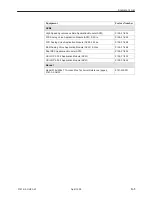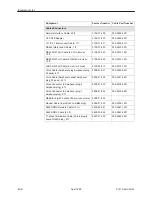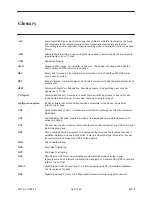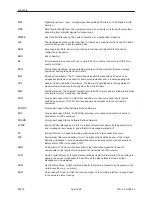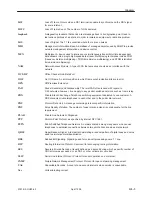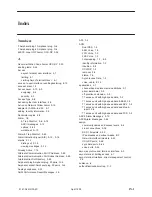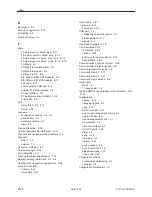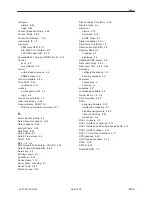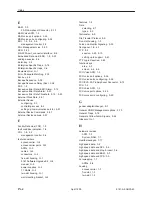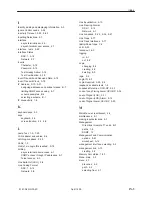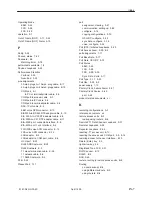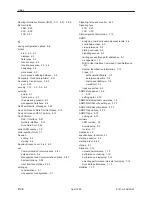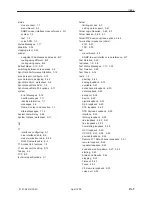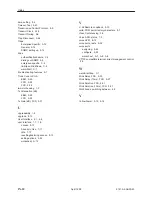
Glossary
GL-3
9161-A2-GH30-40
April 1999
Loss of Frame. Occurs when a DS1 terminal is unable to synchronize on the DS1 signal
for some interval.
Loss of Frame Count. The number of LOFs declared.
A diagnostic procedure that sends a test message back to its origination point. Used to
test various portions of a data link in order to isolate an equipment or data line problem.
Loss of Signal. The T1 line condition where there are no pulses.
Management Information Base. A database of managed objects used by SNMP to provide
network management information and device control.
Multiplexer. A device used to interleave or simultaneously transmit multiple independent
data streams into a single high-speed data stream. Multiplexing techniques include FDM
(frequency division multiplexing), TDM (time division multiplexing), and STDM (statistical
time division multiplexing).
Network Access Module. A type of CCA that accesses or acts as an interface with the
network.
Office Channel Unit–Data Port.
Out Of Frame. An error condition in which frame synchronization bits are in error.
Off-Premises Extension.
Packet Assembly and Disassembly. The term PAD often is used with regard to
X.25 networks; however, it can apply to any packet-switched network, such as frame relay.
Private Branch Exchange. Telephone switching equipment dedicated to one customer. A
PBX connects private telephones to each other and to the public dial network.
Protocol Data Unit. A message containing protocol-specific information.
Pulse Density Violation. The number of ones (marks, pulses) is not adequate for the line
requirement.
Private Line Automatic Ringdown.
Point-to-Point Protocol, as specified by Internet RFC 1661.
Public Switched Telephone Network. A network shared among many users who can use
telephones to establish connections between two points. Also known as dial network.
Quasi-Random Signal. A test pattern simulating a random pattern of digital ones and zeros
used to simulate normal transmission.
Robbed Bit Signaling. Signaling used for voice-call processing over a T1 line.
Routing Information Protocol. A protocol for exchanging routing information.
Severely Errored Seconds. Usually defined as a second during which a specific number of
CRC errors was exceeded, or an OOF or other critical error occurred.
Serial Line Internet Protocol. Protocol for serial operation on an internet.
Simple Network Management Protocol. Protocol for open networking management.
Unavailable Seconds. A count of one-second intervals when service is unavailable.
Volts alternating current.
LOF
LOFC
loopback
LOS
MIB
MUX
NAM
OCU-DP
OOF
OPX
PAD
PBX
PDU
PDV
PLAR
PPP
PSTN
QRSS
RBS
RIP
SES
SLIP
SNMP
UAS
Vac
Summary of Contents for 9161 Single T1
Page 1: ...MODEL 916x 926x T1 ACCESS MUX TECHNICAL REFERENCE Document No 9161 A2 GH30 40 April 1999...
Page 34: ...Management and Control 2 6 9161 A2 GH30 40 April 1999 This page intentionally left blank...
Page 54: ...User Interface 4 10 9161 A2 GH30 40 April 1999 This page intentionally left blank...
Page 92: ...Setting Up 5 38 9161 A2 GH30 40 April 1999 Example Channel Allocation...
Page 142: ...Security 6 10 9161 A2 GH30 40 April 1999 This page intentionally left blank...
Page 252: ...IP Addressing B 8 9161 A2 GH30 40 April 1999 This page intentionally left blank...

